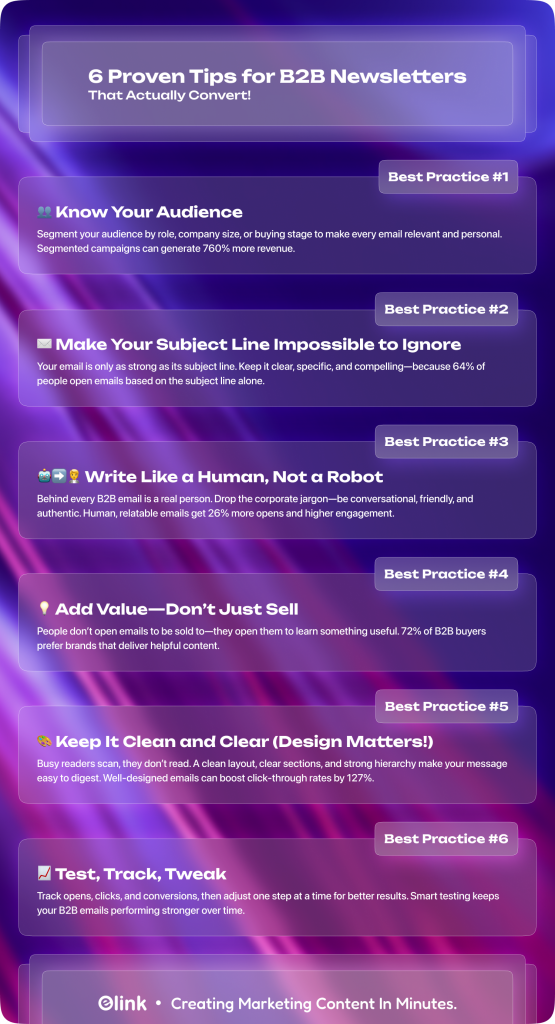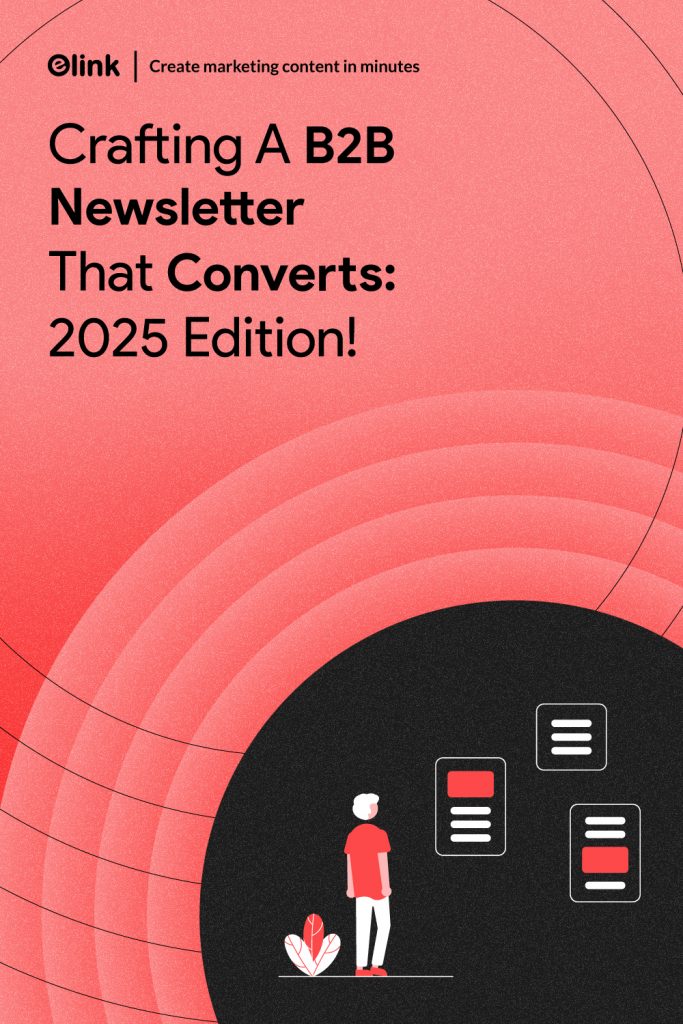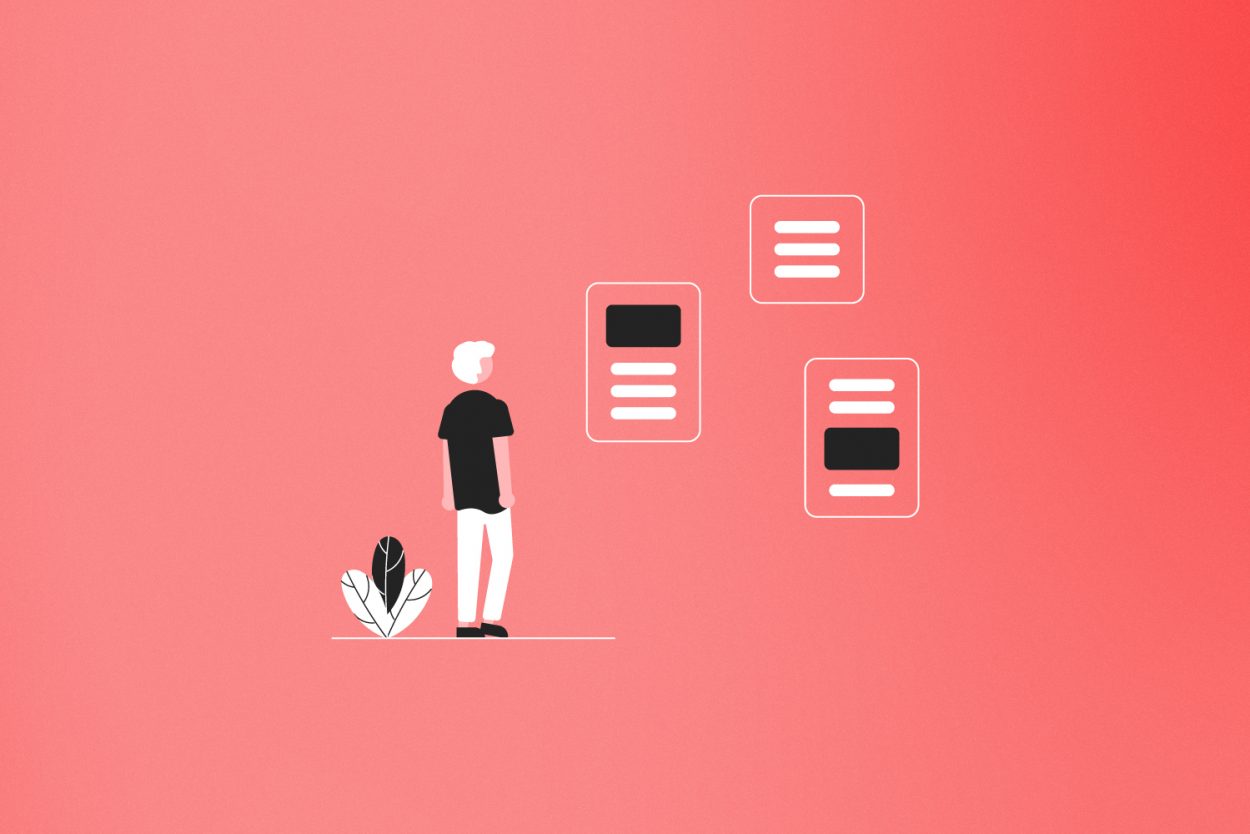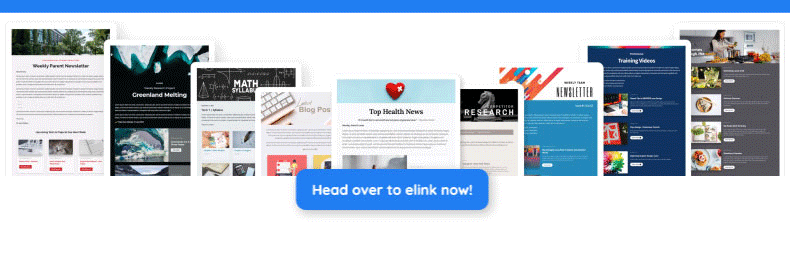If you’re sending B2B newsletters in 2025 and not seeing results, then you’re not alone.
Many businesses are still stuck using outdated email tactics—sending content that looks good but doesn’t lead to conversions. But the truth is, designing a high-converting B2B newsletter today requires more than just a catchy subject line or a nice layout. It needs strategy, structure, and a deep understanding of what your audience truly wants.
So, this blog is your ultimate guide to creating B2B newsletters that get opened, clicked, and produce actual business outcomes. No matter if you’re just beginning or looking to improve what you already send, everything you need about B2B newsletters is right here in this blog —clearly explained, step by step.
Let’s dive in and first take a look at what B2B newsletters actually are.
Also Read 📚 Build Brand Awareness With These 9 Quick Yet Effective Ways!
What are B2B Newsletters?
Okay, let’s make it very simple for you to understand.
B2B newsletters are powerful email updates that businesses send to other businesses. Instead of focusing on everyday consumers, B2B newsletters are crafted specifically for professionals, teams, or decision-makers in other companies.
The primary goal of a B2B newsletter is to provide value, not just sell products. For example, a good newsletter might:
- Share important news and trends from your industry
- Offer practical tips or strategies that help businesses grow
- Keep companies connected with resources, tools, and opportunities
Instead of pushing quick sales like B2C campaigns, B2B newsletters focus on building trust, sharing valuable information, and solving real business challenges.
In short, B2B newsletters are a smart way for businesses to stay relevant, helpful, and top-of-mind with other companies.
Ready to make your B2B newsletters work harder for your business? Let’s explore how these B2B newsletters help your business grow.
🚀 Easily create, design, and share professional B2B newsletters that get results with elink.io!
How B2B Newsletters Help Your Business Grow
B2B newsletters are more than just emails—they’re a smart way to connect with other businesses, share useful insights, and create growth opportunities. When done right, these B2B newsletters help your company stay visible, build trust with decision-makers, and provide real value that strengthens professional relationships.
Here are some key ways B2B newsletters help your business grow:
✅ Build Trust: When you share genuinely helpful information through your B2B newsletter, you show that your business knows what it’s talking about. Over time, your audience begins to see you as a reliable source of insights — not just another company trying to sell something. This trust is what turns casual readers into long-term partners or clients.
✅ Stay Visible: Out of sight often means out of mind. By sending regular newsletters, you can keep your brand in front of key decision-makers. This reminds the companies of your expertise and solutions. So, when they need something your business offers, you’re already top of mind.
✅ Generate Opportunities: Every newsletter you send is a chance to open new doors. By sharing valuable ideas, success stories, or problem-solving insights, you invite other businesses to reach out — leading to collaborations, partnerships, or new deals.
✅ Educate Your Audience: A good B2B newsletter doesn’t just promote — it teaches. Share trends, tools, and practical strategies that can help your readers improve their own operations. When you make their lives easier, you earn both attention and respect.
✅ Strengthen Relationships: Staying connected matters. Regular, meaningful communication through newsletters keeps your relationships with clients, partners, and prospects strong. It shows that you care about providing value even when you’re not directly selling — and that’s what builds lasting loyalty.
📄 Quick Fact: B2B email newsletters are highly effective—73% of B2B buyers prefer to be contacted via email, making it one of the best ways to generate leads and nurture business relationships.
Unlike regular ads that just try to sell, B2B newsletters focus on giving value first. Over time, your audience starts seeing you as a trusted partner, and that opens doors for long-term growth.
Now, let’s dive into proven best practices for crafting high-converting B2B newsletters.
Best Practices to Create high-converting B2B Newsletters
So, you know that B2B newsletters can do wonders—but how do you actually make your b2b newsletters work? No worries, we’ve got you covered.
Let’s go through some tested-and-true best practices that’ll make your b2b newsletter get noticed, opened, and deliver actual business results.
1. Know your audiences (who you’re talking to)
Let’s start with a simple truth that holds a lot of weight: if you try to talk to everyone, you end up connecting with no one.
Well, in B2B email marketing, this matters even more. Your B2B emails don’t need to reach everyone; they need to reach the right decision-makers and professionals with the right message. That’s when your B2B email stops being noise and starts making an impact.
Think about this for a second: would you send a detailed product demo to a CEO who just downloaded your brochure yesterday? Or send a basic “welcome” email to a long-time enterprise client who already knows your platform inside out?
Of course not, right? That’s why knowing your audience is the very first step to effective B2B email marketing. When you know your audience well, you can segment them by factors like their company size, role, buying stage, or past interactions. This makes your emails far more relevant, personal, and persuasive.
📊 Even studies show that segmented email campaigns lead to 760% more revenue, along with higher open and click-through rates.
2. Make your subject line impossible to ignore
Let’s be honest—your email lives or dies by the subject line.
You might have the most useful, well-crafted message inside the email, but if the subject line isn’t attention-grabbing, it’ll never be opened. Particularly in B2B, where email boxes are full of updates, pitches, and promotions—you’ve got seconds to make someone care about your emails.
So how do you get noticed? You have to craft a subject line that’s clear, specific, and just interesting enough to encourage a click. Because 64% of people open an email based on the subject line alone. And if it doesn’t catch their eye, they most likely won’t even bother opening it. So, make your subject line count—because if no one opens your email, nothing else inside really matters.
For instance, instead of something generic like: “Monthly Update – September 2025”
You can try: “3 Quick Wins to Boost Your Team’s Efficiency This Week” or “Tired of Wasting Hours on Email? Try This.”
🚀 Bonus: Make your emails and content stand out with eye-catching product page templates — perfect for highlighting offers, updates, or resources in style!
3. Write like a human, not a robot
Now this one might sound obvious, but it’s where many B2B emails go wrong.
Just because you’re writing to businesses doesn’t mean your tone has to be cold, formal, or robotic. At the end of the day, every email lands in the inbox of a real person, and people love to connect with a human voice, not corporate jargon.
Let’s be real for a second. Would you respond to an email that says: “We are pleased to inform you about the latest enhancements to our enterprise-grade solution.”
Yeah… probably not.
But what if it said: “Big news—we’ve just rolled out a feature that helps your team save hours each week.”
Feels different, right? It’s still professional, but it sounds like it came from a real person—not a marketing robot. And that’s what brings more engagement in the email marketing campaigns.
📊 Why It Matters: Emails written in a human, conversational tone get 26% more opens, more replies, and better engagement overall.
So just write like you’re talking to someone over coffee because that’s what truly builds a connection with your viewers.
4. Add value—don’t just sell
Here’s the golden rule of B2B email marketing: If every email you send feels like a sales pitch, your audience will stop listening.
Yes, you’re in business to make sales—but your audience isn’t opening emails just to be sold to. People are looking for something that helps them: a tip, a solution, or a new idea they can actually use. So if you want to win trust (and eventually, business), focus on delivering value first. The sale will follow naturally.
Let’s say you run a CRM platform.
So, instead of saying: “Upgrade to our premium plan today!” you can go with “Struggling to keep leads organized? Here are 3 ways to fix that.”
See the difference? You’re starting with a real problem and offering a useful solution. You’re not just telling them to buy—you’re showing them why your product matters.
📚 Quick Fact: 72% of B2B buyers say they are more likely to do business with a company that provides useful, problem-solving content.
👉So next time you hit “Send,” ask yourself: Is this email helping or just selling? Because when you lead with value, your emails don’t get ignored—they get appreciated.
5. Keep it clean and clear (Design matters!)
Here’s a fact many marketers tend to forget: People don’t read email; they scan it.
Especially in B2B, your audience is very busy. They’re checking your emails between meetings, during coffee breaks, or while juggling tasks. And if your layout is cluttered, confusing, or hard to read, they’re likely to skip it—no matter how good your content is.
That’s why a clean, minimalist design is essential.
Well-designed emails can lead to higher click-through rates by up to 127%. Because when your email is clean and clear, your message shines through—and so does your brand.
So yes, design directly impacts performance.
6. Test, track, tweak
Here’s the reality: even the greatest email marketers aren’t always perfect on the first attempt.
And that’s completely fine because smart marketers don’t just make a guess… they test and learns.
Well, the best way to improve your B2B emails over time is to see what’s working, what’s not, and make small changes in the email based on real data. But what exactly should you check to improve the outcomes of the emails? Let’s find out.
✏️ What Should You Track?
- Start with open rates — they tell you if your subject lines are doing their job.
- Then look at click-through rates to see if people actually enjoy what’s inside.
- Watch your unsubscribes; maybe you’re sending a bit too often.
- And of course, track conversions — that’s where real results show up.
And remember, the key is to improve step by step. Change one thing, test it, learn from it, and try again. The best B2B email marketers don’t just send emails and cross their fingers — they watch, adjust, and keep getting better.
So now you know the best practices of creating B2B newsletters, you’re already ahead of the game. But let’s be real, knowing what to do is great, but actually creating professional emails every week takes a lot of time and effort. That’s where Elink.io comes in—your shortcut to building stunning B2B emails without needing design skills or extra tools. Let’s explore how Elink.io can help you with your B2B email campaigns.
Also Read 💡 How AI Images Make Your Newsletter Stand Out – Elink

How Elink.io Can Help With Creating B2B Newsletters
Okay, so now you may be asking yourself: “I understand the benefits of sending B2B newsletters. I see the best practices. But how do I really put it all together to create an amazing newsletter without wasting hours on formatting emails?“
That’s where Elink.io comes in to the rescue.
Elink is an all-in-one smart content curation and creation tool. It helps you collect links, articles, videos, and other content from anywhere on the web and turn them into beautiful newsletters, web pages, or social media posts—all in minutes. You don’t need any design or coding skills; Elink automatically formats your content into a professional layout.
Here’s how Elink can help you in making high-converting B2B emails without the hassle:
✔️ Create professional newsletters in minutes: If designing emails feels like a time-consuming task, elink.io makes it effortless. With its smart drag-and-drop editor, you can transform web links, blog posts, or product pages into beautiful newsletters in just a few clicks—no coding or design skills needed.
✔️ Choose from beautiful, responsive templates: No matter if you’re sending a welcome series, a monthly roundup, or a feature announcement to your audiences, Elink has many gorgeous templates to suit your needs. Also, all these templates are fully responsive means they look good on all devices like mobile phones, tablets, or laptops.
✔️ Bookmark and curate content effortlessly: Elink’s bookmark extension makes it easy to save and organize links from anywhere—articles, videos, products, or any online content. This feature helps you quickly build newsletters, resource pages, or social updates without hunting for content every time.
✔️ Keep your content fresh, always: Elink allows real-time updates to your content. That means your audience always sees the latest version of your newsletter or webpage without needing to resend the link—perfect for dynamic content like blogs, product updates, or curated resources.
✔️ Integration with your favourite tools: Already using Mailchimp? Gmail? ActiveCampaign or any other email marketing platform. Great—Elink works with all of them. You can create your newsletter in Elink and export it to your preferred email platform straight away. It also integrates with website builders, blogs, and collaboration tools—so whether you’re emailing, posting to your site, Elink will seamlessly fit into your workflow.
💥Bonus: Embed your content anywhere
Elink doesn’t just end at newsletters—you can even embed your created content anywhere, like your blog, website, landing page, or even internal dashboards. You just have to build once—then you can share your content everywhere.
In short, Elink has everything that you need to create a high-converting b2b newsletter. So, what are you waiting for? Sign up today and start creating now to take your email marketing to the next level.
Wrapping It Up
So B2B email marketing in 2025 isn’t about doing more—it’s about doing it smarter. You don’t require any complex words or cumbersome tools. You just simply need the right strategy, a simple message, and a way to deliver value consistently. And today, you have the blueprint with this blog.
From knowing your audience to writing as a human, adding value in real ways, and leveraging tools such as Elink.io to make the process easier—you’re now capable of crafting newsletters that don’t merely get opened… they get results.
So don’t wait. Start small. Stay consistent.
And don’t forget—every B2B email you send is an opportunity to establish trust, begin a conversation, and move your business forward.
FAQs
Q1. What should a B2B company include in a monthly newsletter?
Here’s what you can include in your monthly newsletters for a b2b company:
- Helpful blog posts or guides
- Company announcements or product news
- Customer success stories or case studies
- Upcoming events, webinars, or promotions
Q2. What are some creative monthly newsletter ideas for B2B brands?
You can share tips, industry news, customer success stories, behind-the-scenes updates, or quick how-to guides, or anything that helps you connect with your audience.
Q3. Why is a monthly newsletter important for B2B marketing?
A monthly b2b newsletter is important to stay top-of-mind with your audience, build trust in the long-term, educate customers, and nurture long sales cycles without being salesy.
Q4. Can I reuse content from my blog in a company newsletter?
Yes, absolutely. Using your blog content in your newsletter is an intelligent way to:
- Save time
- Redirect traffic back to your site
- Reinforce your message
But just remember to summarize the post and link the post to the full article—don’t just copy-paste everything. Always give readers a reason to click through.
Q5. How do I design a newsletter layout that works for B2B audiences?
B2B readers tend to be busy, and they usually skim the content—so you should keep the newsletter design simple and concise. Here’s a basic design that works:
- Simple header and brief intro
- One main piece of content (or 2–3 max)
- Bullet points or bold text for quick scanning
- One good CTA
- Mobile-responsive design (super important!)
Tip: With tools like Elink.io, it’s incredibly simple to build professional-looking, responsive designs—no design skills required.
Keep Reading and Learning 📚
- How To Write An Introduction Email?
- Best Email Subject Lines to Boost Your Open Rates!(Examples)
- Best Tech Newsletters to Stay on Top of Trends in 2025
- How to Build Drip Campaigns That Convert in 2025
- How to Build a Monthly Email Marketing Calendar that Works
- SaaS Email Marketing: How to Boost Engagement and Conversions?







